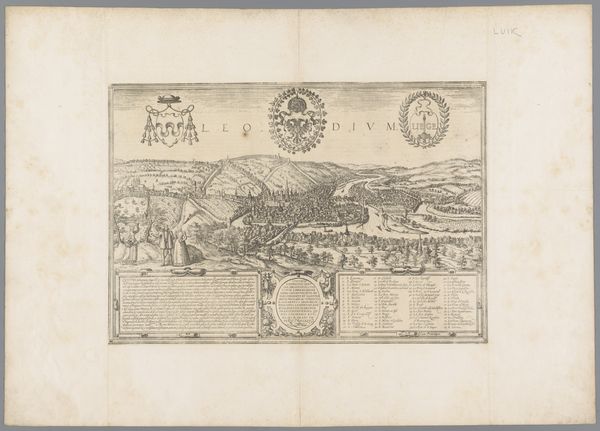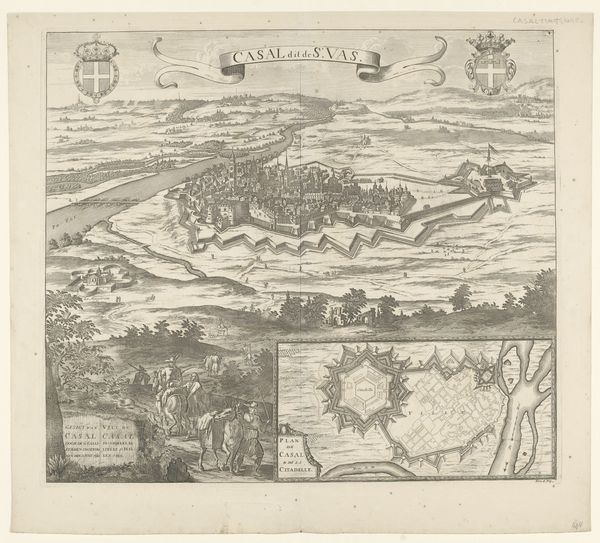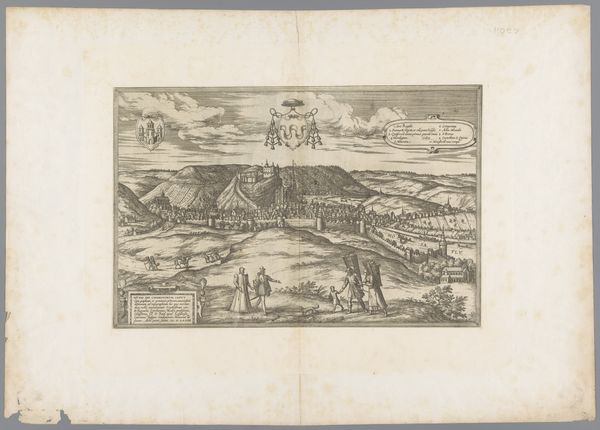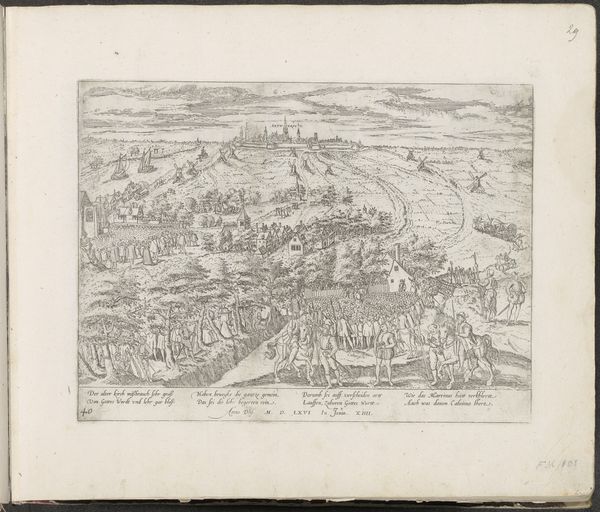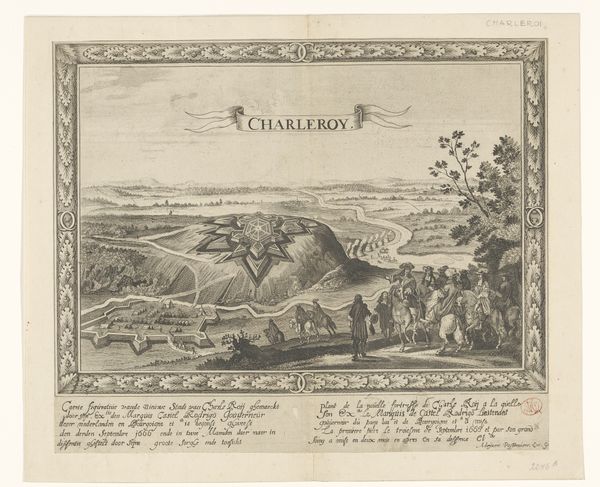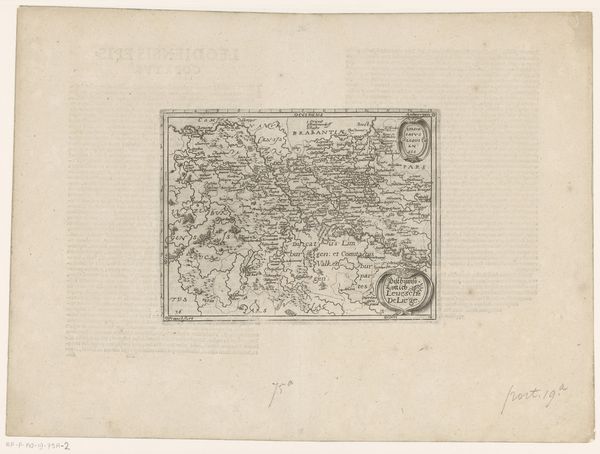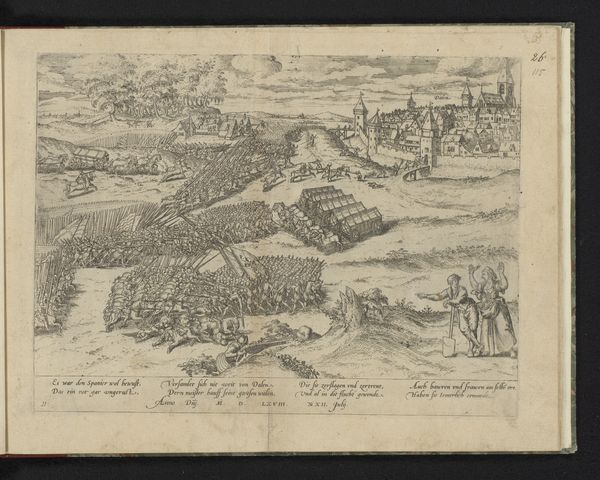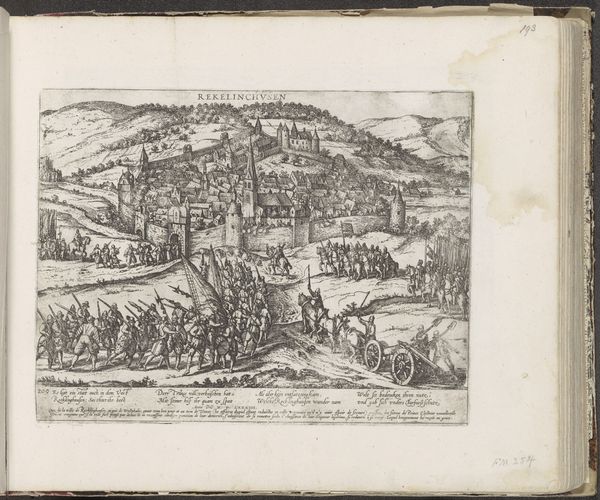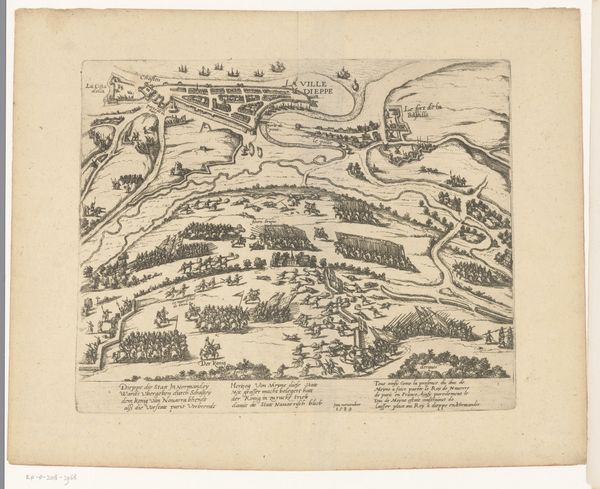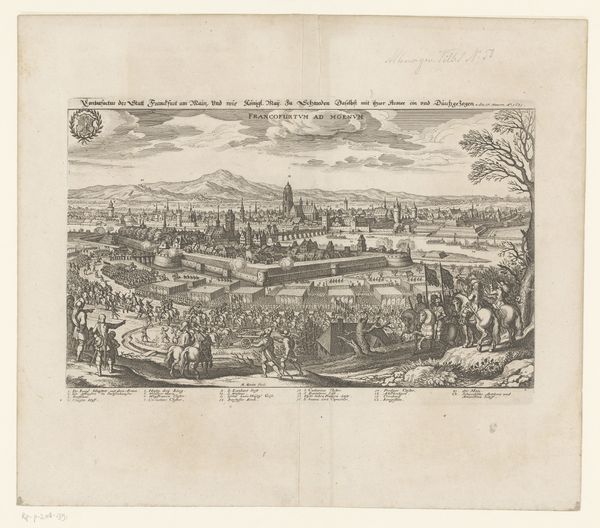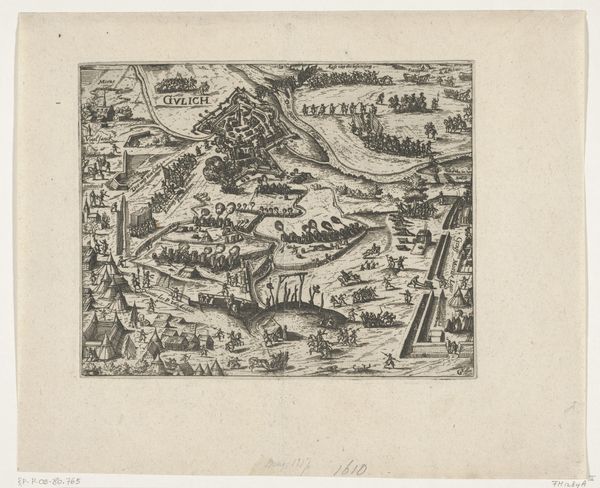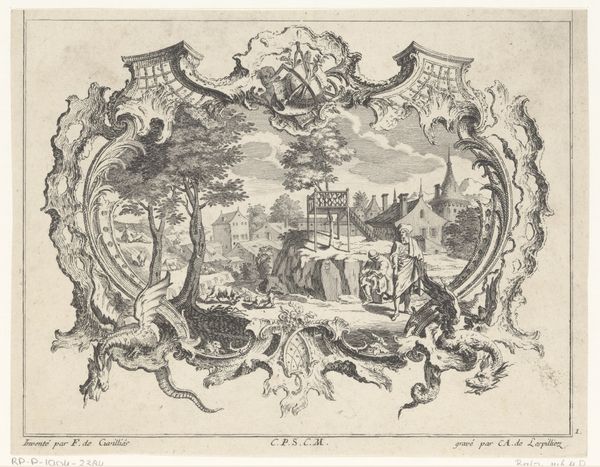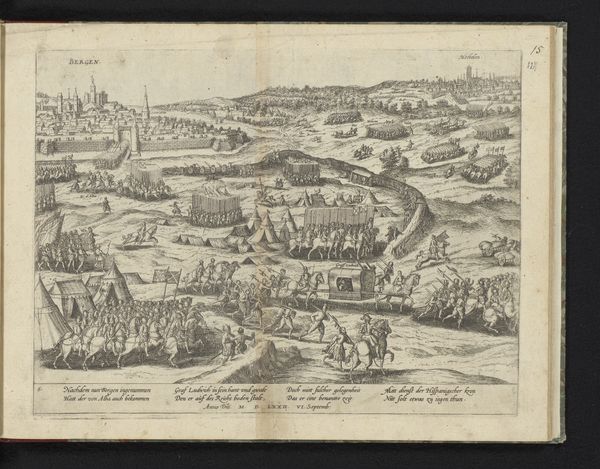
print, etching
#
baroque
#
dutch-golden-age
# print
#
etching
#
landscape
#
cityscape
Dimensions: height 422 mm, width 542 mm
Copyright: Rijks Museum: Open Domain
Editor: So, this etching from 1623, "Gezicht op de Belgische stad Limburg" by Frans Hogenberg... it’s so detailed! I’m immediately drawn to how it balances this almost map-like view of the city with these little pastoral vignettes. How do you read a piece like this? Curator: Given its medium and period, it's tempting to see it as a purely documentary piece. But the etching process itself – the labour involved in creating these fine lines, the accessibility of the print medium to a growing urban audience – tells a richer story. Who was meant to consume this image and what was it intended to do? Editor: That's interesting. I hadn't considered how the mass production of prints factors into its meaning. Were these prints meant for those who had never actually visited Limburg? Curator: Exactly! The print becomes a commodity, connecting the viewer to a place, or rather, a *version* of a place. Notice the inclusion of heraldic symbols, the framing text... they’re all part of constructing a specific narrative. Consider, too, that this is a Dutch Golden Age print of a *Belgian* city. What political and economic dynamics might be at play here? Editor: So, the meaning isn't just in what's depicted, but in how and for whom it was produced? This makes me rethink what I thought I knew about landscape art. Curator: Precisely. The "what" is inextricable from the "how." Editor: Thinking about art in terms of material production has completely changed the way I view this piece. Curator: Indeed, recognizing that labour and materials underpin all art offers us a vital perspective into its significance.
Comments
No comments
Be the first to comment and join the conversation on the ultimate creative platform.
